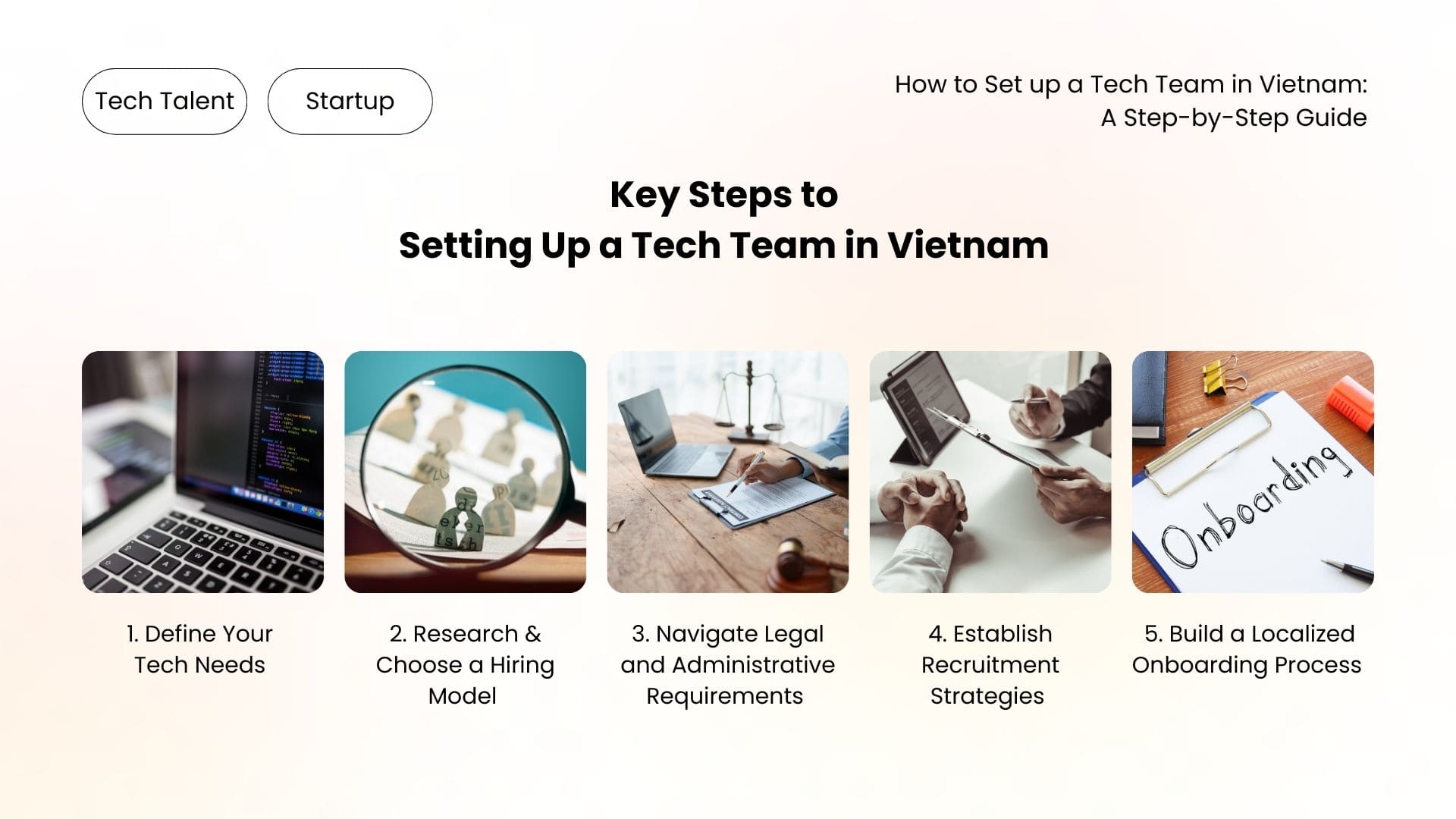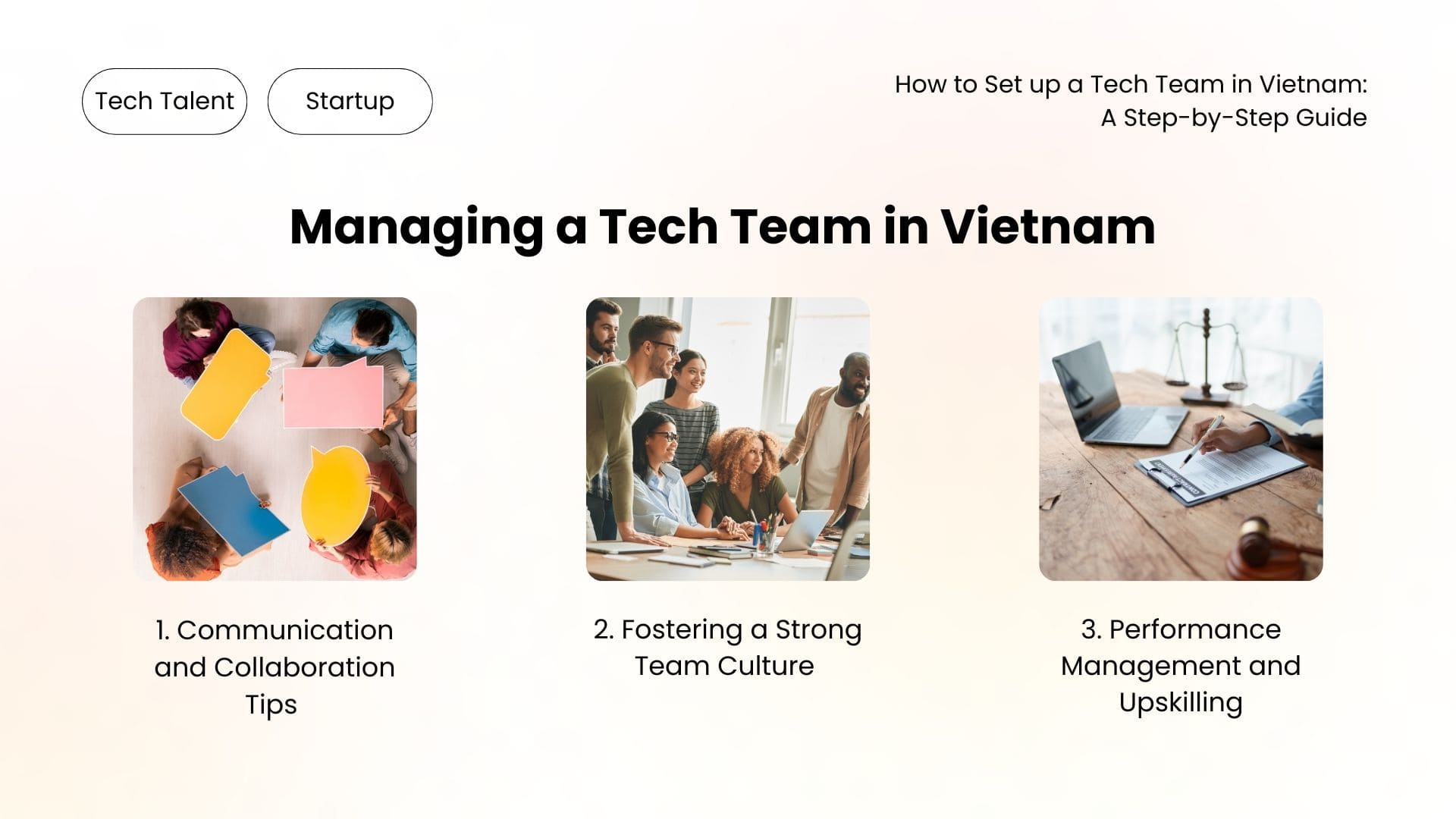Vietnam has rapidly emerged as one of the most exciting global hubs for tech talent. With its blend of cost efficiency, a robust talent pool, and a dynamic ecosystem, Vietnam offers significant advantages for enterprises looking to expand their technology operations.
For companies aiming to build agile tech teams and scale strategically, Vietnam provides a unique opportunity. But how do you get started? This guide walks you through the key steps to successfully establish and manage a tech team in Vietnam, from leveraging its advantages to overcoming challenges.
Why Vietnam?
Vietnam boasts a thriving tech talent pool with a young, dynamic workforce skilled in software development, AI, cloud computing, and blockchain. Emphasizing STEM education, the country produces over 50,000 IT graduates annually, ensuring a steady supply of qualified professionals. Increasing English fluency among younger professionals facilitates international business communication.
Cost-effectiveness makes Vietnam an attractive destination, with labor and operational costs significantly lower than tech hubs like Singapore, the United Kingdom, or Silicon Valley. Strategically located as a gateway to the APAC region, Vietnam offers easy collaboration with neighboring countries and aligns well with the time zones of major hubs like Australia and India, supporting seamless cross-regional partnerships. Additionally, Vietnamese IT talents are known for their flexibility with working hours, making it easy to collaborate with teams across different time zones, including North America and Europe, ensuring smooth communication and productivity regardless of location.
Key Steps to Setting Up a Tech Team in Vietnam

1. Define Your Tech Needs
Before starting, clarify the scope of your technical requirements.
- Identify specific skills needed, such as backend development, data engineering, or AI/ML expertise.
- Determine the type of team you need. Would a permanent in-house setup suit your goals, or would freelancers or a hybrid team work better?
2. Research and Choose a Hiring Model
There are several hiring models to consider based on your budget, timeline, and objectives.
- Build an in-house team: Tap into local job boards such as AppGenie and Innovaotrs Hub Asia while working with dedicated recruiters.
- Partner with outsourcing firms: Engage established entities in Vietnam to handle recruitment and daily team operations.
- Leverage talent platforms: Platforms like AppGenie (United States), Evoluter (Europe), and Innovators Hub Asia (APAC) simplify hiring by directly connecting you with vetted tech professionals.
3. Navigate Legal and Administrative Requirements
Setting up shop in Vietnam requires compliance with local laws and business protocols.
- Business registration: Determine the ideal legal structure for your company, such as a limited liability company (LLC) or representative office.
- Employment laws: Understand local labor laws, work permit requirements, and contract protocols.
- Taxation: Familiarize yourself with Vietnam’s corporate tax rates and employee contribution regulations. Consider hiring a local tax consultant for guidance.
4. Establish Recruitment Strategies
Attracting top talent requires a localized recruitment approach.
- Work with local employment platforms to incorporate Vietnamese-specific job-searching preferences.
- Use LinkedIn to identify experienced professionals with global exposure.
- Partner with on-the-ground recruitment firms to reach passive candidates.
5. Build a Localized Onboarding Process
A seamless onboarding process is essential to integrate your team members effectively.
- Cultural alignment: Revise training materials and adjust for differences in work culture and language.
- Team-building initiatives: Conduct activities like welcome sessions or company outings to build rapport between remote and local teams.
Managing a Tech Team in Vietnam

1. Communication and Collaboration Tips
Effective communication across borders and cultures ensures sustainable team dynamics.
- Use tools such as Slack, Microsoft Teams, or Zoom for real-time communication, and project management software like Jira or Trello to organize tasks.
- Schedule overlapping hours to ensure synchronous discussions between distributed teams.
2. Fostering a Strong Team Culture
To get the best out of your Vietnamese tech team, foster inclusivity and mutual respect.
- Acknowledge cultural differences and seek to understand local customs.
- Organize regular check-ins to maintain strong alignment with company goals.
3. Performance Management and Upskilling
Ongoing training and feedback are crucial to retain top talent.
- Provide feedback through structured performance reviews.
- Engage with local training providers to ensure team members receive relevant upskilling opportunities. Platforms like Coursera and Udemy also have region-specific options.
Unlock Your Tech Potential in Vietnam
Vietnam has carved out its place as a prime destination for innovative tech operations. Its thriving talent pool, cost-efficiency, and strategic location make it an ideal choice for businesses looking to scale effectively.
Not sure where to start – offshoring or outsourcing your tech team? Let Innovators Hub Asia guide you! Schedule a call with our experts to craft a hiring plan tailored to your needs and take the first step toward building your dream team. Let’s make it happen – contact us today!




